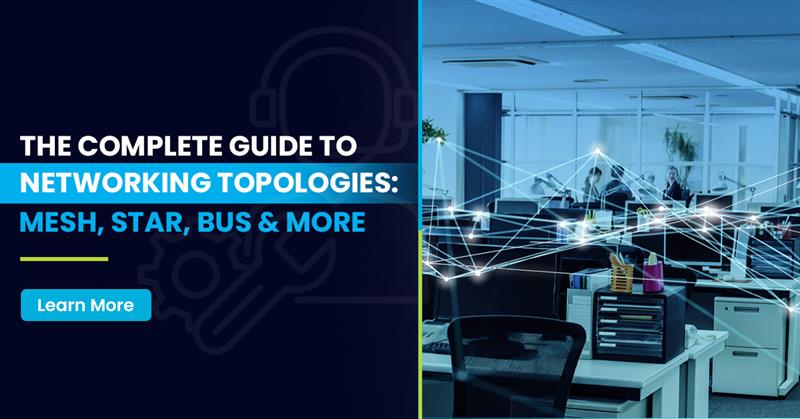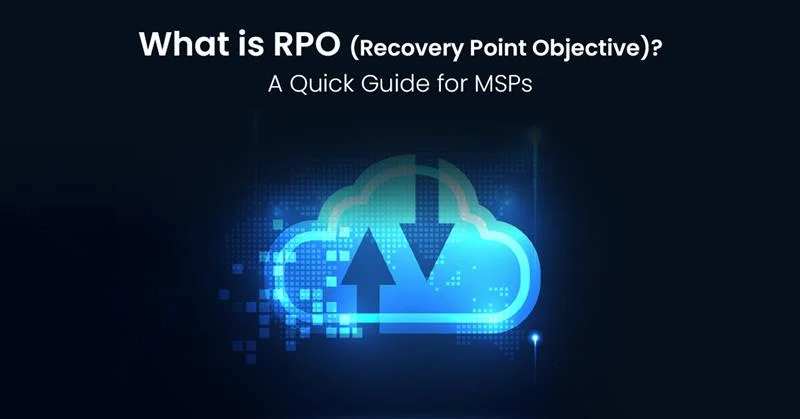Network failures cost businesses an average of $5,600 per minute, as per the 2014 study by Gartner, yet many organizations still struggle with basic network topology decisions that could prevent these costly disasters. The average cost of a single hour of downtime now exceeds $300,000 for over 90% of mid-size and large enterprises, making proper network topology selection more critical than ever.
Your network topology isn’t just about connecting devices—it’s the blueprint that determines whether your business thrives or suffers when digital demands peak. This comprehensive guide cuts through the confusion surrounding networking topology, covering everything from basic network topology meaning to advanced implementations that drive business success.
What is network topology and its importance?
The logical and physical configuration of the connections, devices, and data channels that make up a network infrastructure is known as its topology. Understanding what network topology is helps organizations design systems that deliver optimal performance, reliability, and scalability for their specific business needs.
Network topology directly impacts:
- Data transmission speed and efficiency
- Fault tolerance and system reliability
- Maintenance costs and complexity
- Future expansion capabilities
- Overall business productivity
Poor topology decisions can create bottlenecks that cost thousands in lost productivity daily.
How network topology meaning shapes modern networks
The term “network topology” refers to both the logical data flow between devices and the physical arrangement of network components. Modern networking topology designs must account for:
- Bandwidth requirements – Ensuring adequate data flow capacity
- Security considerations – Protecting against unauthorized access
- Growth projections – Planning for future expansion needs
- Performance optimization – Maximizing speed and reliability
The physical topology determines cable requirements, equipment placement, and installation costs. The efficiency of data flow, security standards, and troubleshooting techniques are all impacted by the logical layout.
Physical topology vs. logical network topology
Physical topology refers to the actual cable layout and device placement within your network infrastructure. This includes:
- Switch and router physical locations
- Cable routing and connections
- Wireless access point placement
- Equipment rack organization
Logical network topology describes how data flows through the network, regardless of physical connections. Key aspects include:
- Data packet routing paths
- Virtual network segments
- Protocol implementations
- Traffic flow patterns
The same physical topology can support multiple logical configurations, offering flexibility in network management and optimization.
Different types of network topology explained
Each networking topology serves specific purposes and offers unique advantages. Selecting the right types of LAN topology requires understanding how each design handles data transmission, fault tolerance, and scalability challenges.
What makes bus network topology effective?
Bus network topology connects all devices to a single central cable called the backbone or bus. This simple networking topology design offers cost-effective solutions for small networks with limited expansion requirements.
Bus topology advantages:
- Low implementation cost
- Simple installation process
- Minimal equipment requirements
- Easy to understand and maintain
Bus topology limitations:
- Single point of failure (backbone cable)
- Performance degrades with more devices
- Collision issues with high traffic
- Limited scalability options
Data transmission in bus topology occurs when devices send signals along the shared backbone. While this creates potential collision issues, proper ethernet topology implementation with collision detection protocols manages these challenges effectively.
How star network topology dominates modern networks
Star network topology connects all devices to a central hub or switch, creating the most popular ethernet topology configuration in modern business environments.
Why star topology leads the market:
- Centralized management – Single point of control
- Excellent fault isolation – Individual device failures don’t affect others
- Easy troubleshooting – Problems are quickly identified
- Scalable design – Simple to add or remove devices
- Dedicated bandwidth – Each device gets full connection speed
The central hub manages all data transmission, eliminating collision domains and providing dedicated bandwidth to each connected device. Most ethernet topology implementations use star configurations because they support easy expansion, centralized security management, and simplified maintenance procedures.
When ring network topology still makes sense
Ring networking topology connects devices in a circular pattern where each device connects to exactly two other devices. Until it reaches its destination, data moves in a single path around the ring.
Ring topology benefits:
- Predictable data transmission timing
- Fair access to network resources
- No collision issues with proper protocols
- Efficient for certain industrial applications
Best use cases for ring topology:
- Industrial automation systems
- Fiber optic backbone networks
- Token ring legacy systems
- Applications requiring deterministic performance
Modern ring implementations often use token-passing protocols to prevent data collisions and ensure fair access to network resources.
Advanced network topology types and applications
Complex networking environments often require sophisticated topology designs that combine multiple approaches for optimal performance and reliability.
Why mesh network topology provides ultimate redundancy
Mesh network topology creates multiple pathways between devices, offering the highest level of fault tolerance available in networking topology designs.
Mesh topology configurations:
- Full mesh – Every device connects to every other device
- Partial mesh – Selective redundant connections for critical paths
- Hybrid mesh – Combines mesh with other topology types
Mesh topology advantages:
- Maximum fault tolerance and redundancy
- Multiple data paths prevent bottlenecks
- Excellent for mission-critical applications
- Self-healing network capabilities
Implementation considerations:
- Highest cost among all topology types
- Complex management and configuration
- Extensive cabling requirements
- Best suited for critical infrastructure
Financial trading systems, emergency services, and critical infrastructure commonly implement mesh networking topology for maximum reliability.
Why tree network topology delivers optimal scalability
Tree network topology merges the advantages of star and bus designs through a layered hierarchical framework that accommodates enterprise growth effectively.
Hierarchical Structure Components:
- Core Layer – Primary backbone infrastructure
- Distribution Layer – Secondary routing nodes
- Access Layer – Individual device connection points
Key Benefits of Tree Network Topology:
- Superior expandability for growing organizations
- Structured administrative control
- Cost-effective deployment model
- Aligns with business organizational charts
Optimal Use Cases:
- University campus networks across multiple facilities
- Multi-story corporate environments
- Distributed geographic locations
- Large-scale enterprise infrastructures
Point-to-point network topology: maximum performance solutions
Point-to-point network topology establishes dedicated pathways between two network nodes, eliminating intermediary hardware requirements.
Primary Benefits:
- Complete bandwidth dedication
- Reduced latency and signal degradation
- Superior security through isolated channels
- Predictable performance characteristics
Common Applications:
- Critical data center interconnections
- Emergency backup communication links
- Confidential data transmission paths
- Long-distance WAN implementations
Contemporary point-to-point network topology setups frequently utilize fiber optic infrastructure or specialized wireless solutions to deliver exceptional performance between essential network components.
Strategic network topology selection guidelines
Determining the optimal network topology demands comprehensive analysis of operational needs, expansion strategies, and technical limitations affecting sustained network effectiveness.
Assessment framework for network topology options
Performance Evaluation Criteria:
1: Traffic Analysis Requirements:
- Data volume capacity needs
- Application response time limits
- System availability standards
- Regulatory compliance mandates
2: Financial Planning Elements:
- Upfront deployment investments
- Continuous operational expenses
- Hardware and infrastructure costs
- Personnel training investments
3: Growth Planning Factors:
- Existing equipment inventory and expansion forecasts
- Geographic growth strategies
- Technology refresh schedules
- Emerging application demands
Physical implementation factors affecting network topology decisions
Installation Considerations:
- Facility design and architectural limitations
- Wiring pathways and maintenance access
- Environmental factors and electromagnetic interference
- Power distribution and equipment housing needs
Operational Management Aspects:
- Service accessibility for maintenance tasks
- Diagnostic complexity levels
- Technical expertise requirements
- Administrative documentation standards
Network topology deployment excellence
Achieving successful network topology implementation demands thorough preparation, appropriate hardware selection, and continuous management approaches that enhance performance across diverse topology configurations.
Ethernet network topology design principles
Modern ethernet network topology implementation standards:
- Strategic hardware positioning for maximum efficiency
- Organized cable infrastructure with comprehensive identification
- Virtual LAN separation for enhanced security and performance
- Backup pathway planning for mission-critical connections
Premium design elements:
- Traffic consolidation methodologies
- Network isolation strategies
- Security framework integration
- Upgrade migration pathways
Continuous monitoring across all network topology types
Critical monitoring functions:
- Live performance assessment for all connected equipment
- Preventive problem identification with automated notifications
- Resource planning through trend evaluation
- Security vulnerability detection and mitigation
Network topology-specific monitoring requirements:
- Star network topology – Central hub performance optimization
- Mesh network topology – Multi-path efficiency management
- Ring network topology – Data circulation effectiveness
- Tree network topology – Hierarchical congestion identification
Conclusion: Optimise your network topology with IT By Design’s NOC service
Choosing the appropriate network topology is only the beginning; sustaining optimal performance demands specialist knowledge. Network topology failures cost organizations $427 every minute, therefore competent monitoring is critical for preserving your infrastructure investment.
Different network topologies present distinct operational issues that need round-the-clock attention. From mesh network topology redundancy management to star network topology centralized control, each design requires tailored monitoring approaches.
IT By Design’s NOC Service delivers:
- 24/7 monitoring across all network topology configurations
- Early problem identification before operations are impacted by topological failures
- Professional optimization of network topology designs, both logical and physical
- Real-time support for complex network topology implementations
- Performance tuning that maximizes your topology investment
Keep your internal IT staff from becoming overwhelmed by the complexity of network topologies. NOC services offered by IT By Design guarantee that the network topology you have selected will provide the scalability, performance, and dependability your company requires.
Schedule a call with us today to transform your network topology from operational risk into competitive advantage.
FAQs (frequently asked questions)
Q1: Which network topology is most widely adopted currently?
A: Star network topology dominates contemporary networks because of centralized administration, expansion capabilities, and problem isolation features.
Q2: How do physical and logical network topology differ?
A: Logical network topology defines how information flows across the system, whereas a physical network topology depicts real wire deployments.
Q3: What network topology provides maximum dependability?
A: Mesh network topology delivers superior reliability using multiple backup pathways, although implementation costs are highest among available options.
Q4: Is it possible to merge different network topology types?
A: Absolutely, hybrid network topology designs blend multiple approaches (star-bus combinations, tree-mesh hybrids) to capitalize on individual strengths while reducing specific limitations.
Q5: What considerations should guide network topology selection?
A: Network topology selection directly affects data transfer rates, bandwidth efficiency, collision management, and comprehensive network performance.








